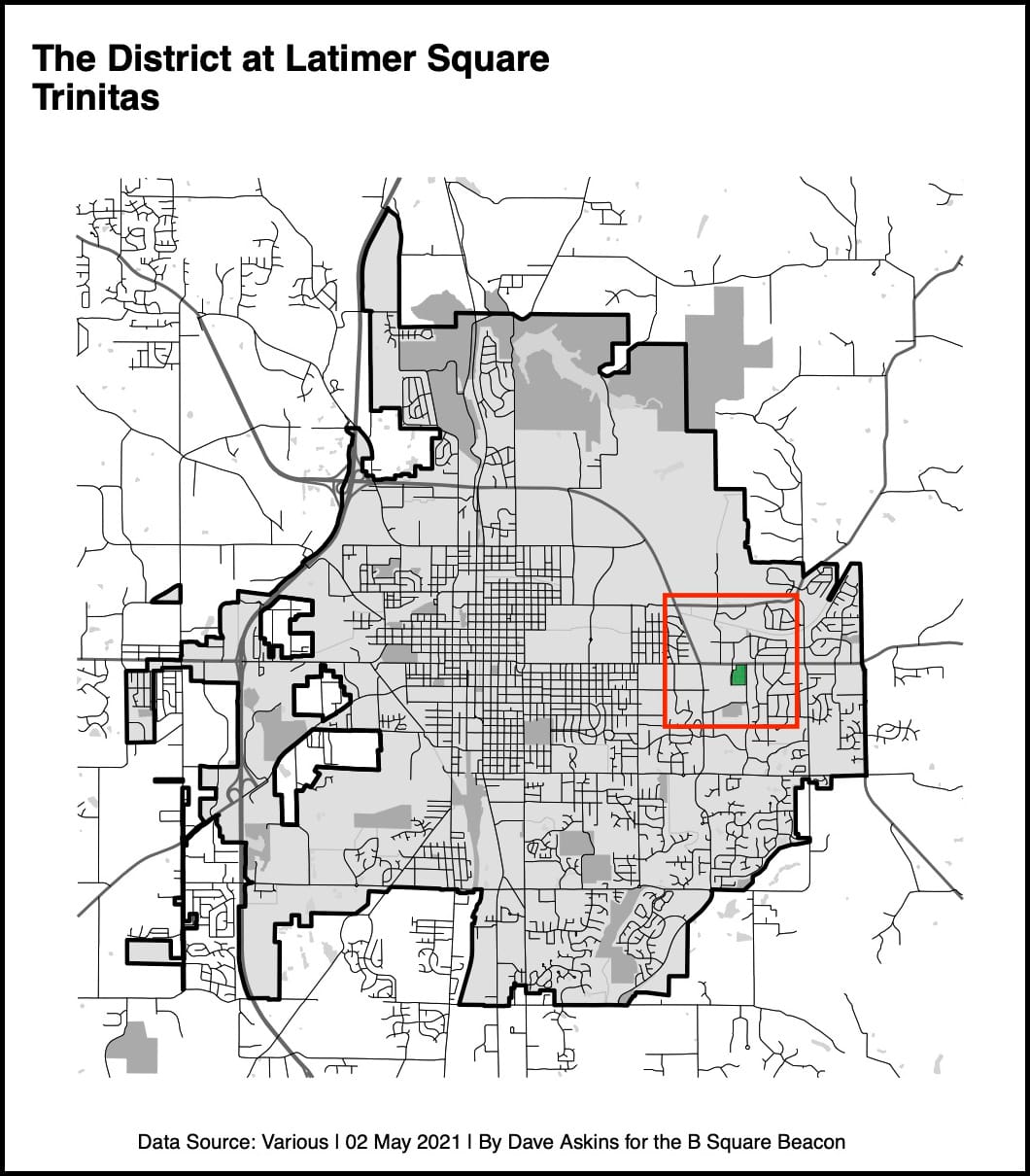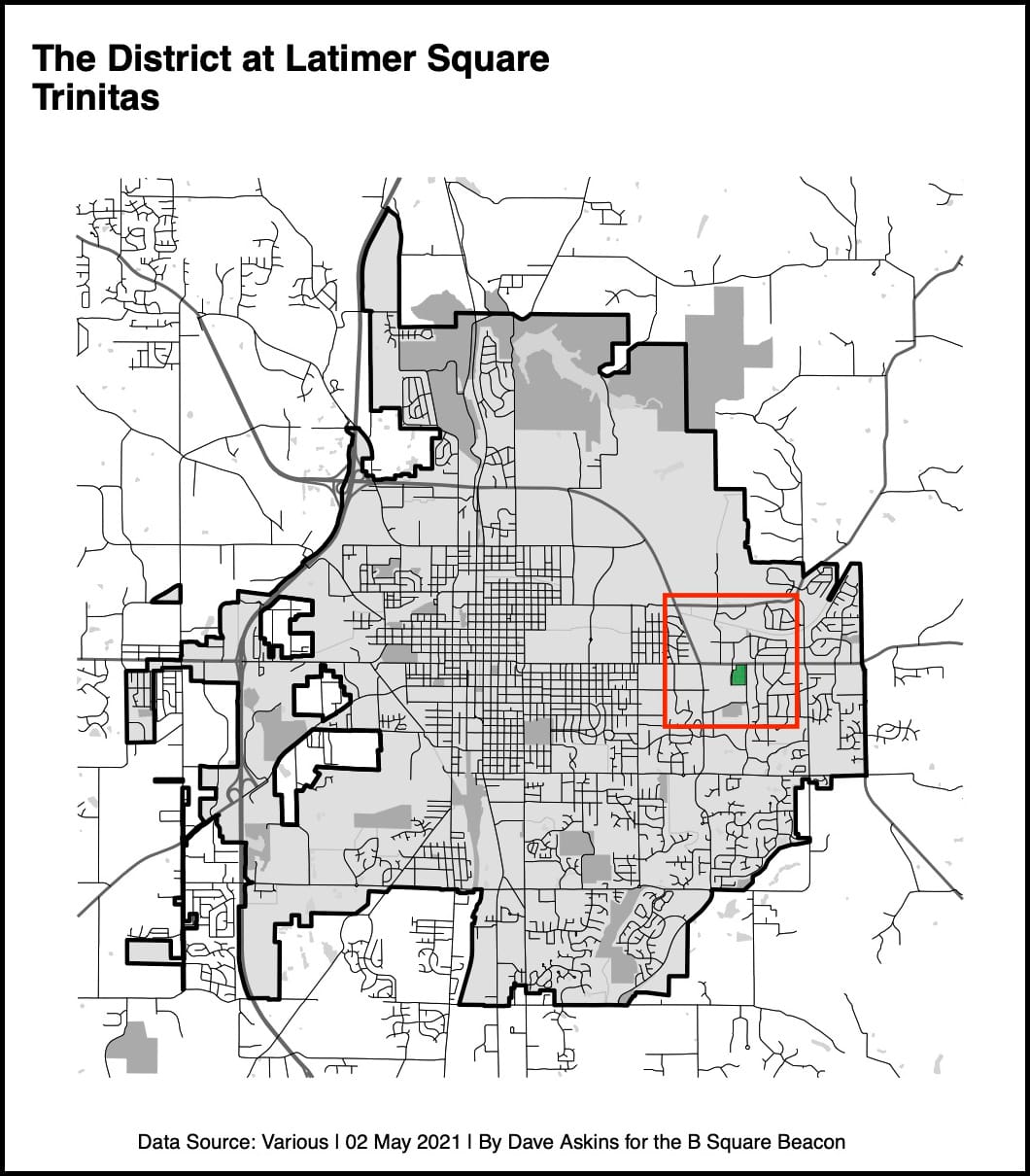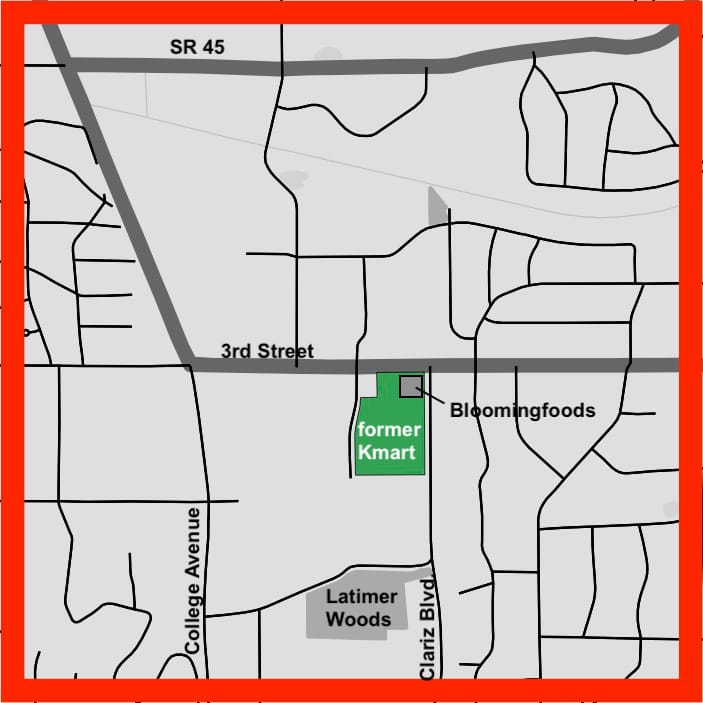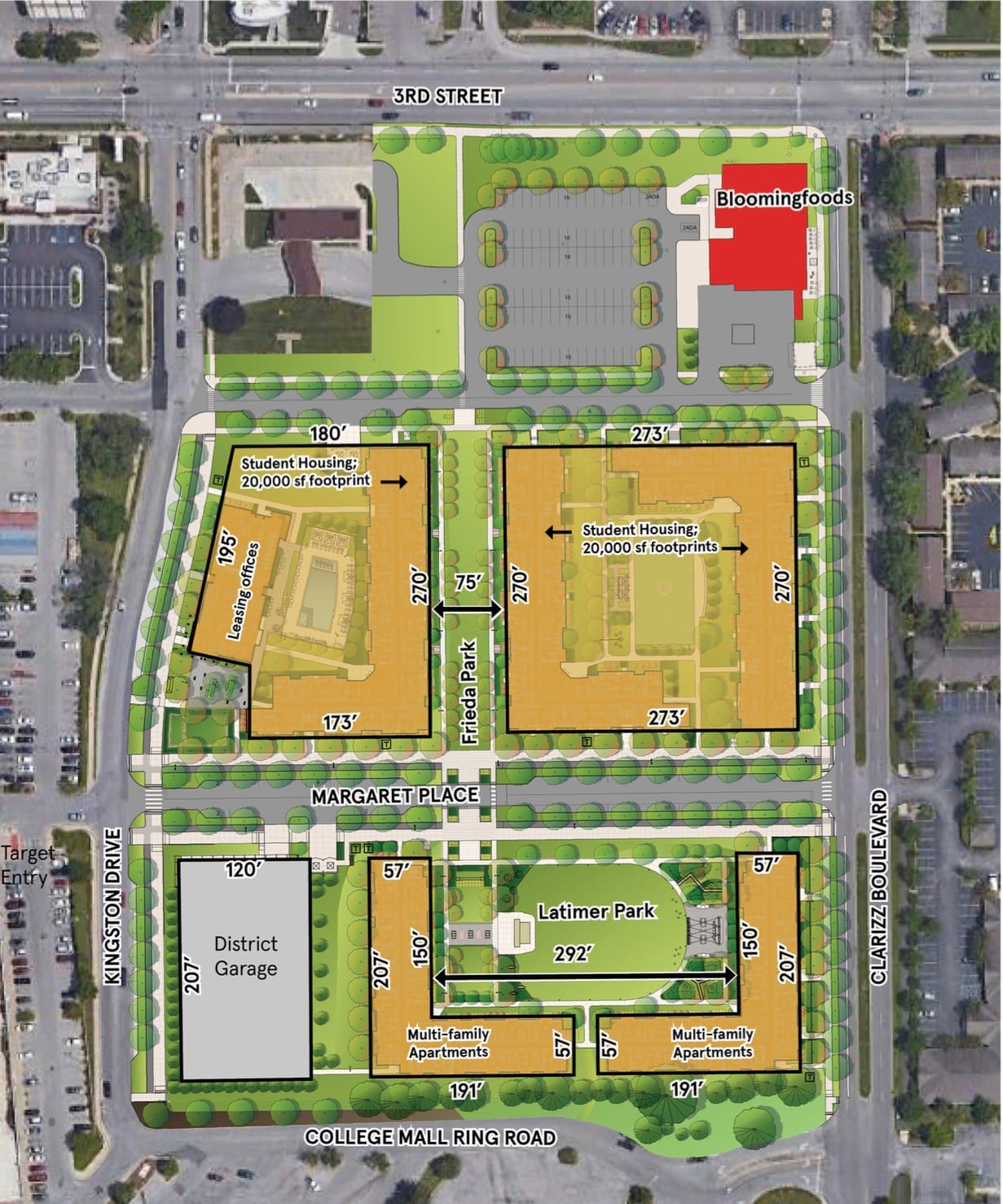Bloomington plan commission meets on Kmart redevelopment: “Yes, it’s better. But is it good?”





At its regular monthly meeting on Monday, Bloomington’s plan commission voted to continue the proposed redevelopment of the Kmart property on East Third Street to its second hearing. That is now set for June 14.
The outcome of Monday’s vote was not exactly hanging in the balance, because the 900-bedroom housing project does not include a rezone request.
That means its approval by the plan commission is “by right”—if it meets the standard conditions required in the MC (mixed-use corridor) zoning district. It also means that the project does not need approval from the city council.
Commissioner Chris Cockerham abstained from the vote on Monday, after disclosing that he represents Bloomingfoods, located on the northeast corner of the site, as one of its general real estate brokers. Bloomingfoods is planned to remain undisturbed as a part of the project.
Because of its “by right” nature, the vote at June’s meeting is likely to give the project a greenlight, which would mean a construction start in November this year, with completion by 2023.
Still, at Monday’s meeting public commenters and plan commissioners alike aired various concerns about the project. The developer can’t be forced to accommodate changes, but could be persuaded to do so.
Among those who offered public comment in opposition to the project was city councilmember Ron Smith. The project is located in District 3, which he represents.
Andrew Cibor, who serves on the plan commission as the city engineer, pointed to a list of planning staff concerns about the project. Cibor said, “I’d like those things to be looked into more.”
The project elements drawing scrutiny from planning staff, which could see some changes between now and June, include: design of the end caps of the buildings; design of the parking garage; relocation of some utility boxes and dumpsters; modifications to the proposed sidewalk connection to 3rd Street; and vehicular access locations.
Cibor framed an overarching question about the proposed redevelopment compared to the site that has sat vacant with an empty building since 2016: “Yes, it’s better. But is it good?”
The proposal from Trinitas, called The District at Latimer Square, would leave the Bloomingfoods grocery in place.
But the proposal would demolish the vacant Kmart building and excavate the parking lot, for construction of a 340-unit multi-family and student-oriented housing development, offering a total of 906 bedrooms.
The layout of the project would include five residential buildings, one leasing and amenity building, and a 385-space parking structure. The site will include another 100 surface parking spaces, and 57 parallel parking spaces, for a total of 542 parking spaces.
Among the zoning requirements that the project is proposed to meet is 40-percent green space (pervious surface). The current amount of green space on the site is just 7 percent. Part of the green space proposed by the project is provided by two proposed parks.
The student-oriented apartments would be constructed in the three buildings on the northern part of the site. The multi-family housing would be constructed in the two buildings on the southern part of the site.
The units will all be rental, none for sale as condos, and will be offered at the prevailing market rental rate in Bloomington. So the project will not include any “affordable units” defined in terms of HUD standards for area median income (AMI).
Plan commission president Brad Wisler said, “I think it’s perfectly appropriate for the commission to state our opinions and to use our standing here to encourage developers to do things that are in the best interest.”
Wisler added, “But we cannot vote down a site plan approval because of its lack of affordable housing or its lack of solar panels or green roofs.”
It was the lack of solar panels and green roofs or other green building elements that caused the city’s environmental commission to express its disappointment about the project: “The EC is disappointed that there are no green building products or practices used at this site.”
The EC’s review includes a recommendation for achievement of high standards for energy efficiency of the buildings: “Because modernizing building methods is so important to the future, the EC recommends that the Petitioner follow the guidelines from the US Building Council’s LEED Platinum certification for green building specifications.”
Commissioner Jillian Kinzie called it unreasonable that the project did not incorporate more green building elements.
Kinzie said, “I would like to see a lot more in terms of green building practices. I think it’s unconscionable for a building of this scope and space…given sustainability concerns.”
Kinzie added, “I don’t even know how we can move this forward without greater attention to green building practices, solar arrays, vegetative roofs. There’s got to be more into this.”
The need for affordable housing, as opposed to student housing, was a frequent talking point for public commenters.
Lucy Schaich introduced herself as a resident of the Park Ridge neighborhood across the street from the proposed project. Schaich said, “We have a lot of student housing over here. I think what we want to be focusing on is affordable housing, workforce housing, community housing.”
Councilmember Ron Smith said, “You know, we don’t need any more student housing. We do need missing middle. We need affordable housing for people.” Smith added, “Trinitas has been told this for a year and a half. And it’s just disappointing that this is what they come up with.”
Smith’s pitch for the use of $20 million in American Rescue Plan Act funds to provide help to low-income people to purchase homes, has been cited favorably by several public commenters during the ongoing city council deliberations on duplex zoning. Those deliberations resume on Wednesday.
Supporters of maintaining a prohibition of duplexes in Bloomington’s central residential districts see Smith’s proposal, floated at a city council session held on April 27, as a more direct way to support affordable housing efforts, than zoning for duplexes.
Smith’s idea looks like it it could be consistent with guidance from the U.S. Treasury Department on ARPA funds, even if affordable housing is not among the uses that are explicitly mentioned in the ARPA’s bullet points as permissible uses by cities.
The U.S. Treasury’s guidance says that eligible ARPA services include “services to address homelessness, such as supportive housing, and to improve access to stable, affordable housing among unhoused individuals.”
Also included in the U.S. Treasury’s guidance as eligible uses of funds is “affordable housing development to increase supply of affordable and high-quality
living units.”
The meeting packet for the June 14 meeting of the Bloomington plan commission—when the Trinitas redevelopment site plan for the old Kmart site is set to continue—will be posted on the city’s website, on the plan commission’s page.




Comments ()